 | ||
The Panama Canal On the morning of Thursday, March 26, we arose early and went up to the Deck 10 forward area, that portion of the ship with the best outdoor view of the arrival at the Canal. When I got there relatively early, the deck was already lined with people, some having been up there since 5 a.m. We had been told that we would be passing Panama City to the right of the ship, go under the Bridge of the Americas, and then enter the Miraflores Locks and begin to transit the Canal. The first sighting of Panama City was rather spectacular. It was looming ghostlike out of the sea in a mist, an almost Emerald City-like vision. | ||
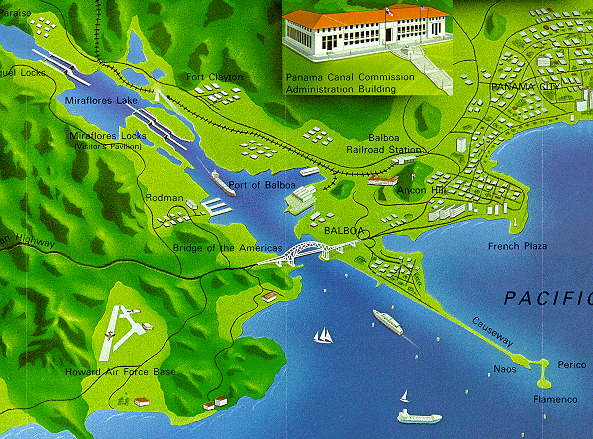 | ||
From the Panama Canal Commission's 1997 official map, this is a representation of the Pacific entry into the Canal. | ||
The Panama Canal was actually first envisioned hundreds of years ago by the Spaniards, but the French, under Ferdinand deLesseps (who had built the Suez Canal), thought they could build a sea level canal and they began operations in Panama in the 1870's. They were to fail as a result of inadequate equipment, lack of funds, and severe losses of life due to Malaria, Yellow Fever, and accidents. A sea level canal was a hopeless venture. At the beginning of the 20th Century, the country of Panama was established as a result of a small revolt encouraged by the United States (it had been part of Colombia). President Teddy Roosevelt began the process of constructing a lock canal through the Isthmus of Panama. But the Americans found similar problems to those experienced by the French, and it was not until Yellow Fever was eradicated and Malaria was controlled that true construction could begin in 1904. Three sets of locks had to be built; a nine mile cut (the Culebra or Gaillard Cut) down into the earth through mountainous jungle and the Continental Divide, had to be excavated and supported' and the Chagres River had to be dammed in order to create the incredible man-made Gatun Lake, the fresh-water source of all of the water used in the Canal locks. The canal opened, at long last, in 1914, just as World War I was beginning. | ||
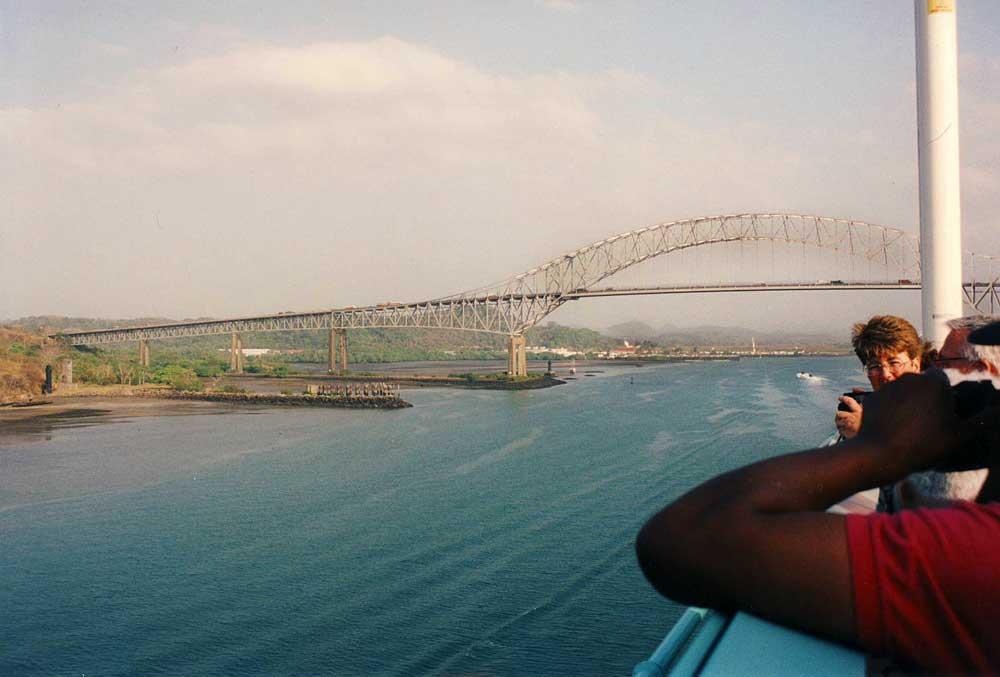 | ||
About to go under the Bridge of the Americas. | ||
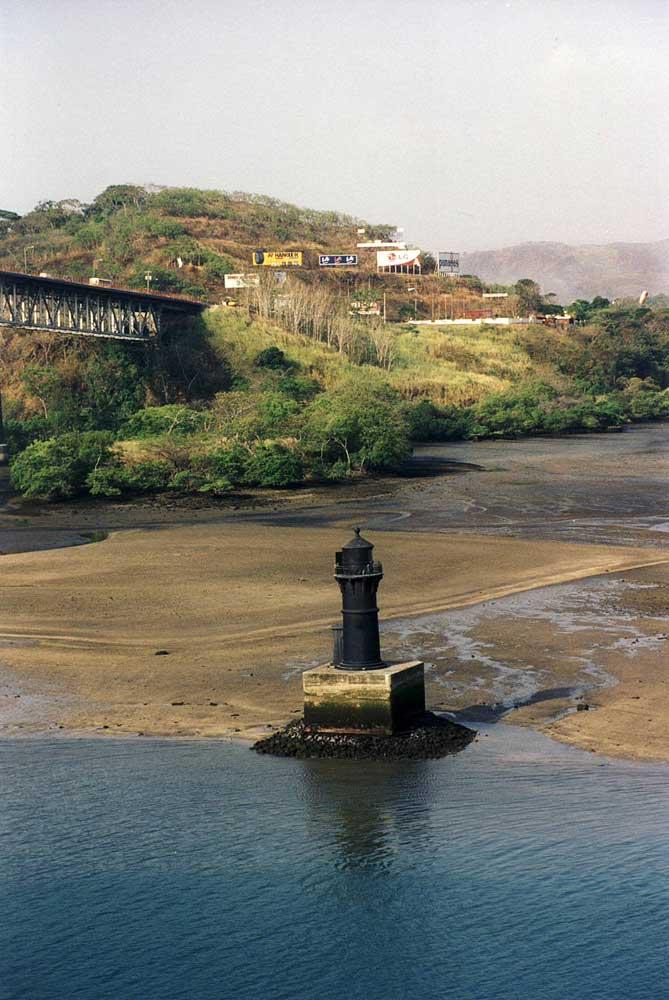 | ||
A lighthouse just beyond the bridge. | ||
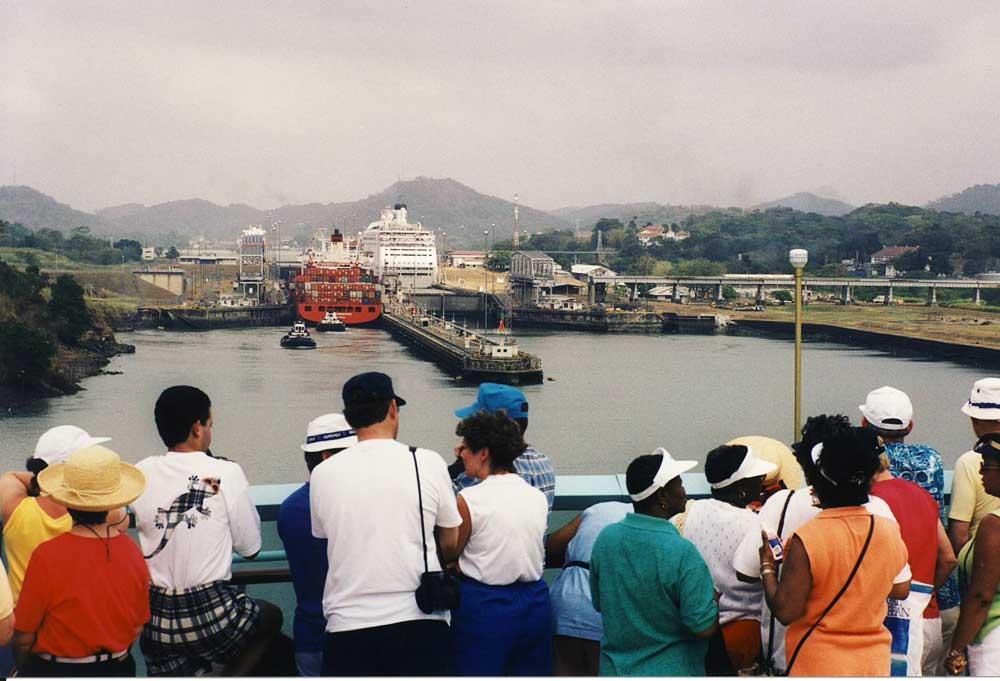 | ||
This is the Pacific entrance to the Canal, about to enter the Miraflores Locks. The white ship in the lock to the right was the Princess Lines' Regal Princess. The red ship to the left was a container ship. | ||
The operation of the Canal is rather simple in concept and absolutely brilliant. Two sets of locks on the Pacific end (the Miraflores and Pedro Miguel Locks--which are separated by the one mile Miraflores Lake) and the single Gatun Locks on the Atlantic end either raise or lower the ship. When entering the Canal, a ship is raised by the locks to the level of Gatun Lake which is well above sea level. At the other end, the locks lower the ship back to sea level. Each lock works by simple gravity. For example, in lifting the ship to lake level, fresh water enters the locks from the lake to lift the ship to the next level. Each time the ship moves from a lock to another lock or to the lake, water is released through spillways into the oceans. Approximately 52 million gallons of water is used up for one large ship to move through the Canal. Panama has a long rainy season and thus the continued health of the rainforest around the Canal is essential to maintaining the level of the lake and the functionality of the Canal. | ||
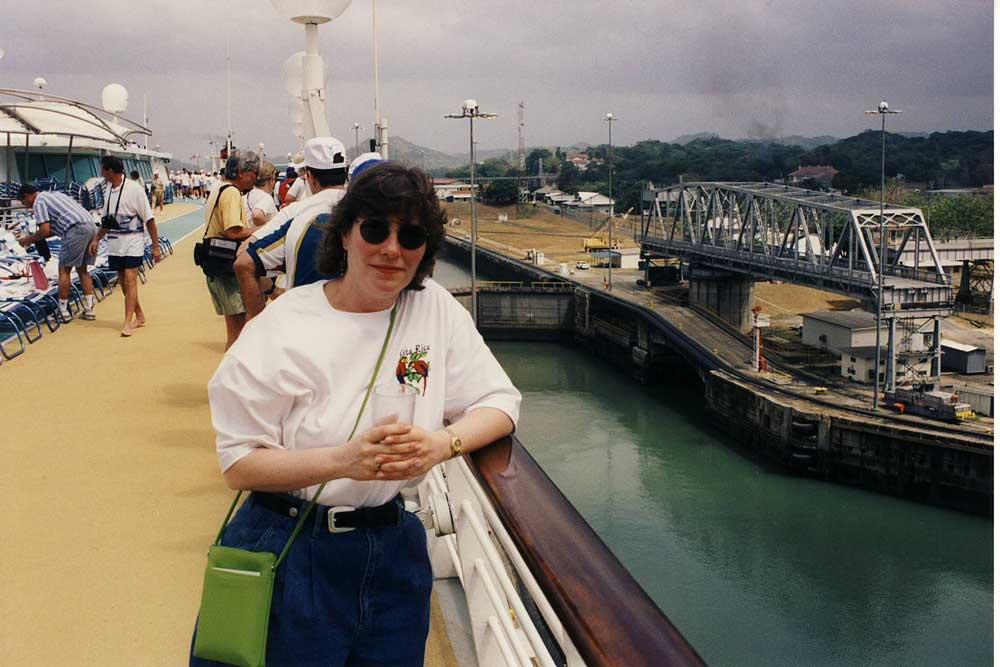 | ||
Carole on Deck 10 as we were entering the first lock at Miraflores. | ||
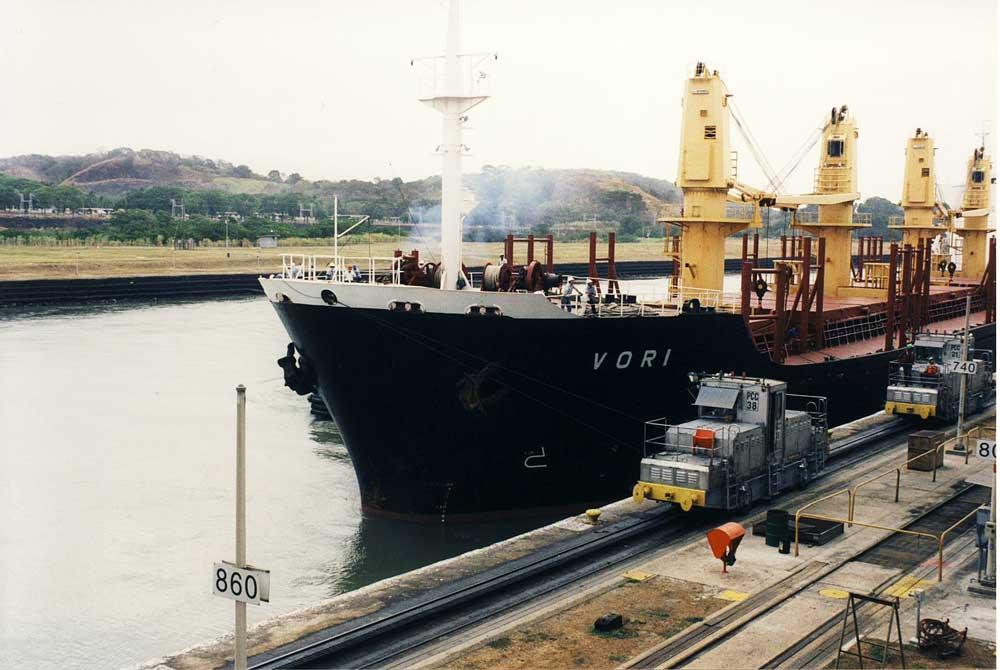 | ||
The Canal was busy. Here is a ship in the lane next to ours | ||
When a ship enters the Panama Canal, the operation of the ship is completely taken over by a Panama Canal pilot who guides the ship through the locks. At each lock, a large cruise ship barely makes it in, with only a few feet to spare on each side. The ship is tied to the shore and guided by rail engines on the shore which are called "mules" in honor of the animals who pulled boats through other locks at other canals. Once the ship is in a lock, it doesn't take long to feel the ship either being raised or lowered by the lock. | ||
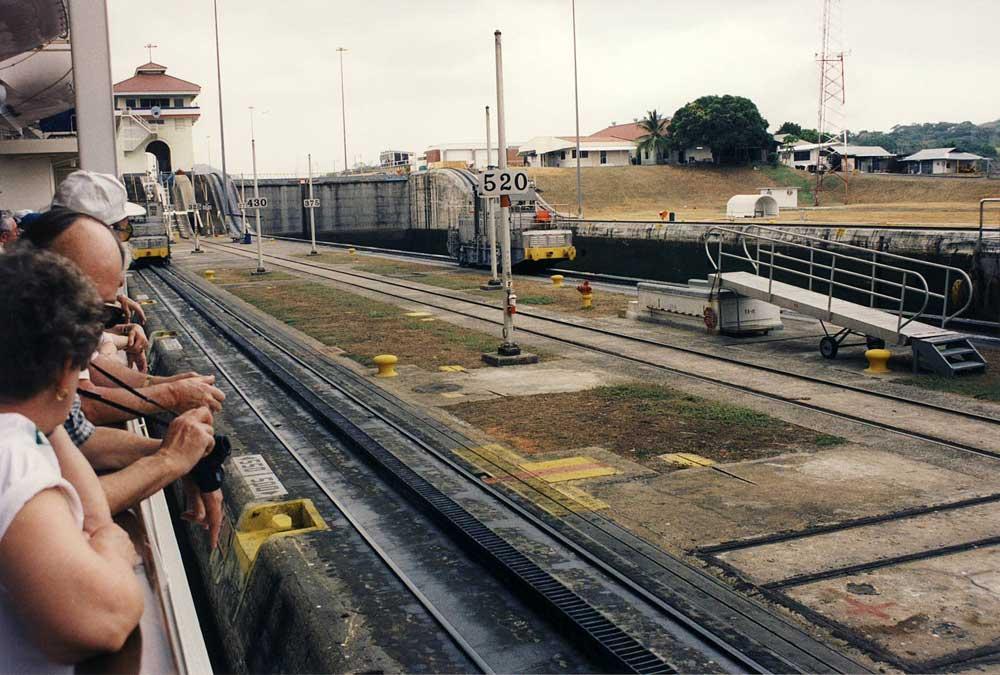 | ||
This photo shows how close the ship was to the edge of the lock. You could almost touch it. | ||
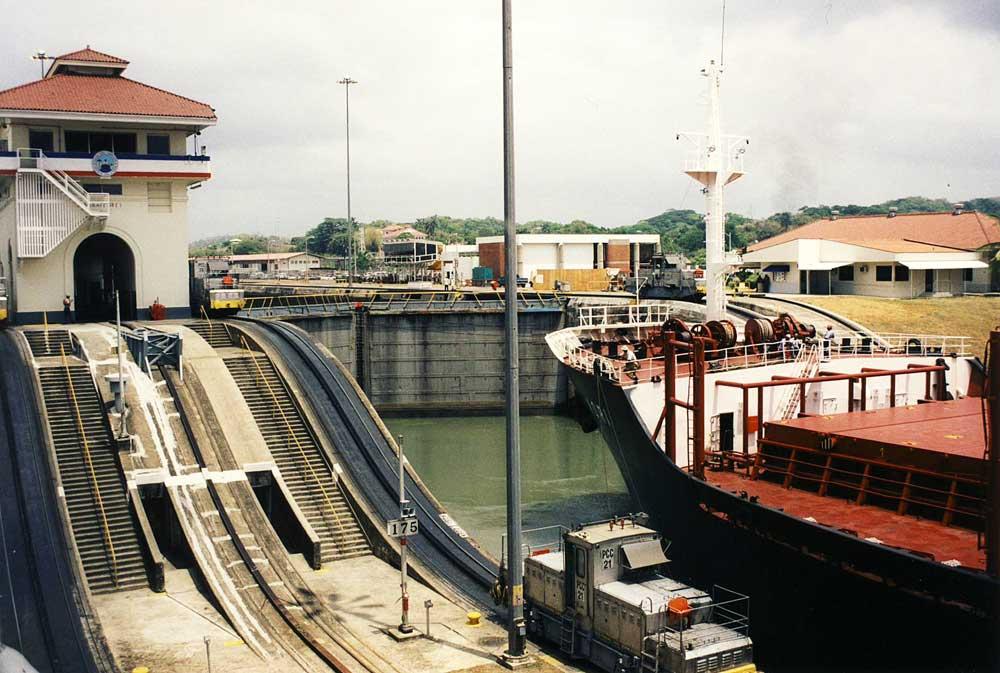 | ||
A "mule" in action. | ||
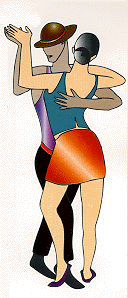 | ||||
Click on the dancers for page 3 of our Panama adventure | ||||